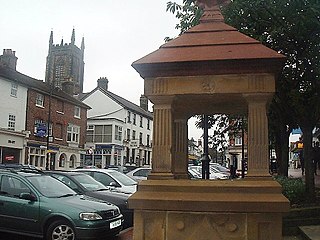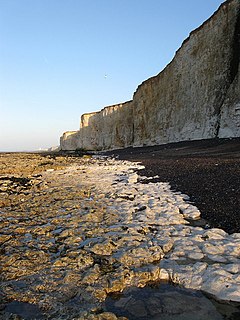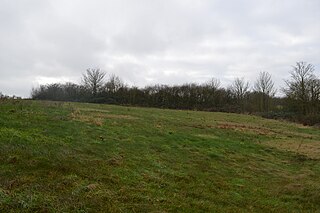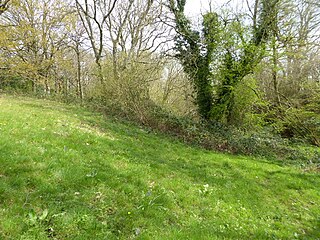| Site of Special Scientific Interest | |
 | |
| Area of Search | West Sussex |
|---|---|
| Grid reference | TQ 380 347 [1] |
| Interest | Geological |
| Area | 0.6 hectares (1.5 acres) [1] |
| Notification | 1990 [1] |
| Location map | [ Magic Map] |
Stone Farm Rocks or Stone Hill Rocks is a 0.6-hectare (1.5-acre) geological Site of Special Scientific Interest south of East Grinstead in West Sussex. [1] [2] It is a Geological Conservation Review site. [3]

A Site of Special Scientific Interest (SSSI) in Great Britain or an Area of Special Scientific Interest (ASSI) in the Isle of Man and Northern Ireland is a conservation designation denoting a protected area in the United Kingdom and Isle of Man. SSSI/ASSIs are the basic building block of site-based nature conservation legislation and most other legal nature/geological conservation designations in the United Kingdom are based upon them, including national nature reserves, Ramsar sites, Special Protection Areas, and Special Areas of Conservation. The acronym "SSSI" is often pronounced "triple-S I".

East Grinstead is a town and civil parish in the northeastern corner of Mid Sussex district of West Sussex in England near the East Sussex, Surrey, and Kent borders. It lies 27 miles (43 km) south of London, 21 miles (34 km) north northeast of Brighton, and 38 miles (61 km) east northeast of the county town of Chichester. The civil parish covers an area of 2,443.45 hectares and had a population of 23,942 persons in the 2001 census. The population of the town at the 2011 Census was 26,383.

West Sussex is a county in the south of England, bordering East Sussex to the east, Hampshire to the west and Surrey to the north, and to the south the English Channel.
This is typical of many sandstone crags in mid-Sussex which expose the Tunbridge Wells Sand Formation, part of the Wealden Group which dates to the Early Cretaceous between 140 and 100 million years ago. It displays a variety of sedimentary structures in three dimensions and is described by Natural England as "an important site for the study and interpretation of sedimentary structures in the upper Lower Tunbridge Wells Sand". [4]
The Tunbridge Wells Sand Formation is a geological unit which forms part of the Wealden Group and the uppermost and youngest part of the unofficial Hastings Beds. These geological units make up the core of the geology of the Weald in the English counties of West Sussex, East Sussex and Kent.
The Wealden Group is a group in the lithostratigraphy of southern England. The Wealden group consists of paralic to continental (freshwater) facies sedimentary rocks of Berriasian to Aptian age and thus forms part of the English Lower Cretaceous. It is composed of alternating sands and clays. The sandy units were deposited in a flood plain of braided rivers, the clays mostly in a lagoonal coastal plain.
The Early Cretaceous or the Lower Cretaceous, is the earlier or lower of the two major divisions of the Cretaceous. It is usually considered to stretch from 146 Ma to 100 Ma.
The site has been owned by the British Mountaineering Council since 2001, who run it for the benefit of climbers. There are 74 identified climbs on the rocks. Bolt belays have been installed at the top of many of the climbs to reduce erosion of the site. [5]

The British Mountaineering Council (BMC) is the national representative body for England and Wales that exists to protect the freedoms and promote the interests of climbers, hill walkers and mountaineers, including ski-mountaineers. The BMC are also recognised by government as the national governing body for competition climbing.

















